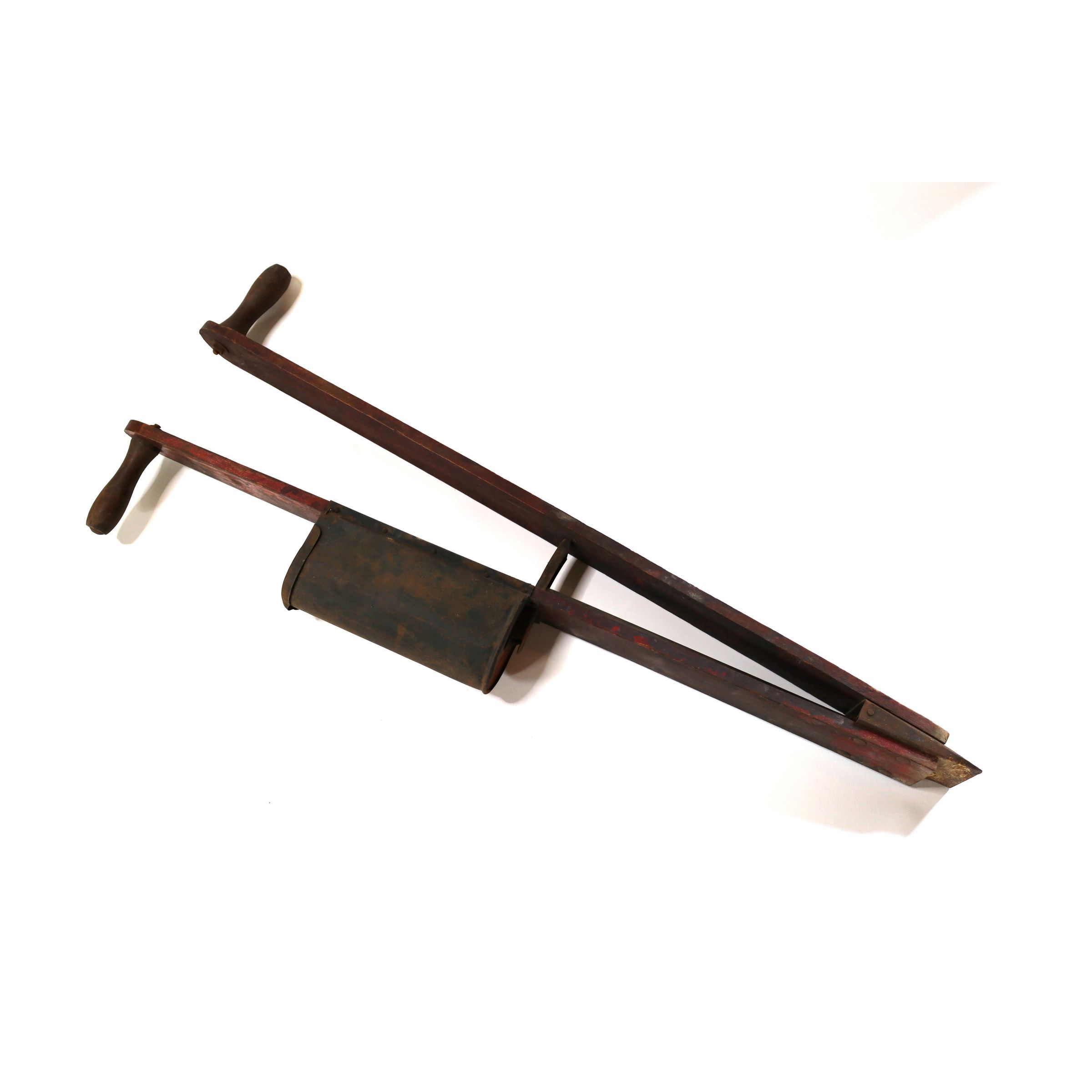Name/Title
ACME Corn JabberEntry/Object ID
2021.2.3.10Description
This hand-held corn planter consists of 2 wooden planks connected on one end by a pointed spike. On the other end, 2 wooden handles are affixed for gripping during use. A metal seed box is attached to the side of the planter to allow the user to plant crops after creating holes in the ground.Context
Early American settlers learned to plant corn in checkrows from indigenous peoples. The process began by breaking up the soil with a hoe. Then a pair of farmers would commence with the planting. The first dug a hole with a dibble. The second dropped four seeds into the hole and then covered them with a little hill of soil. Next, the team spaced the little hills about a yard apart in two perpendicular directions. This created a checkerboard pattern called a checkrow.
It took about a day to plant an acre of corn with the original method. A tool like the one shown above — known as a bill pick or corn jabber — could cut the time in half. A tube connects the seed can to the pointed end. To plant your corn, you first jab the point into the soil. Then you push forward, using the wooden handle at the top. The brace in the front hits the ground surface, and the spring opens the birdlike “bill” at the point, releasing the seed.Location
Building
Antique Barn and Nature CenterOhio State Park
Barkcamp State Park
